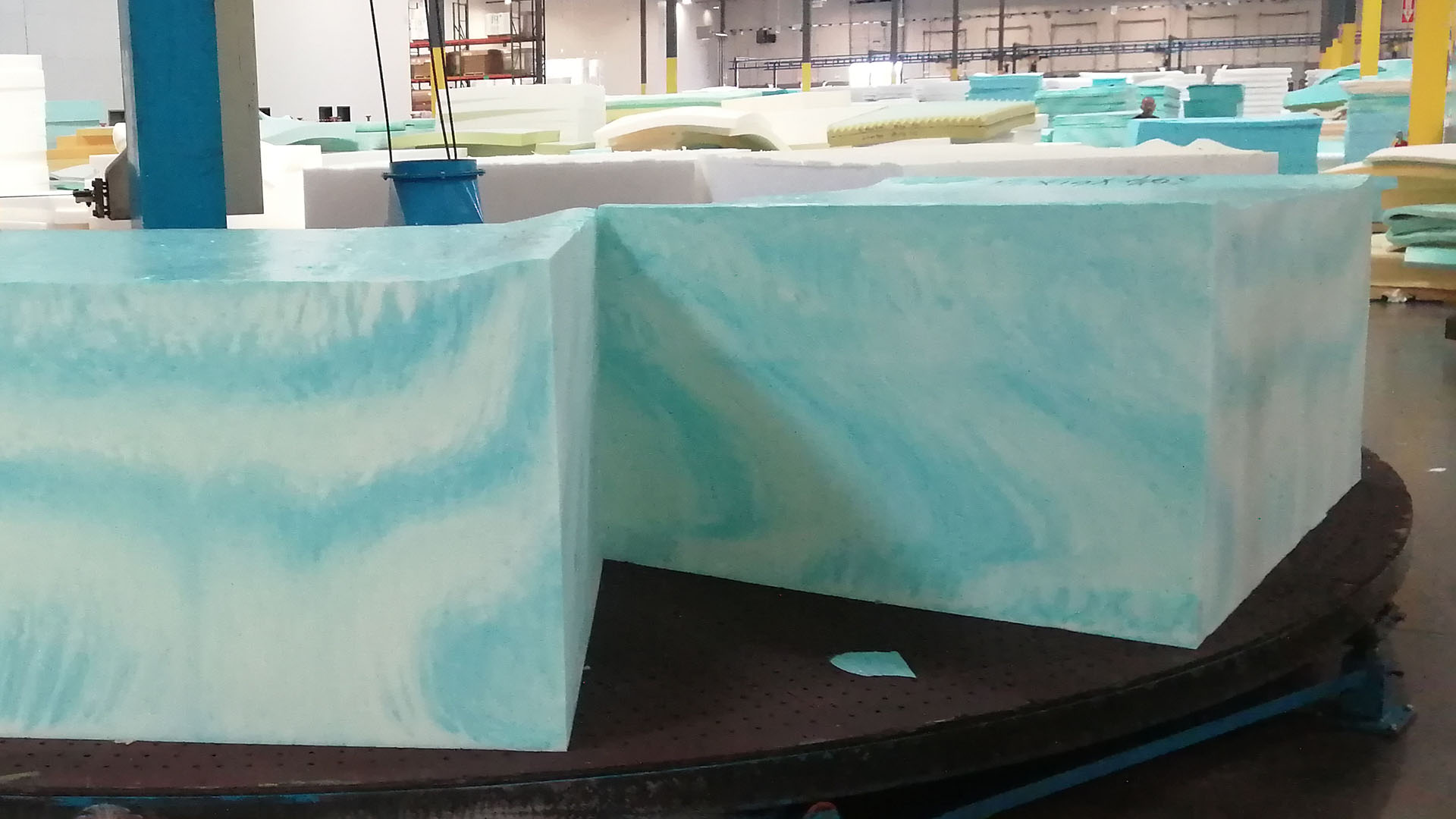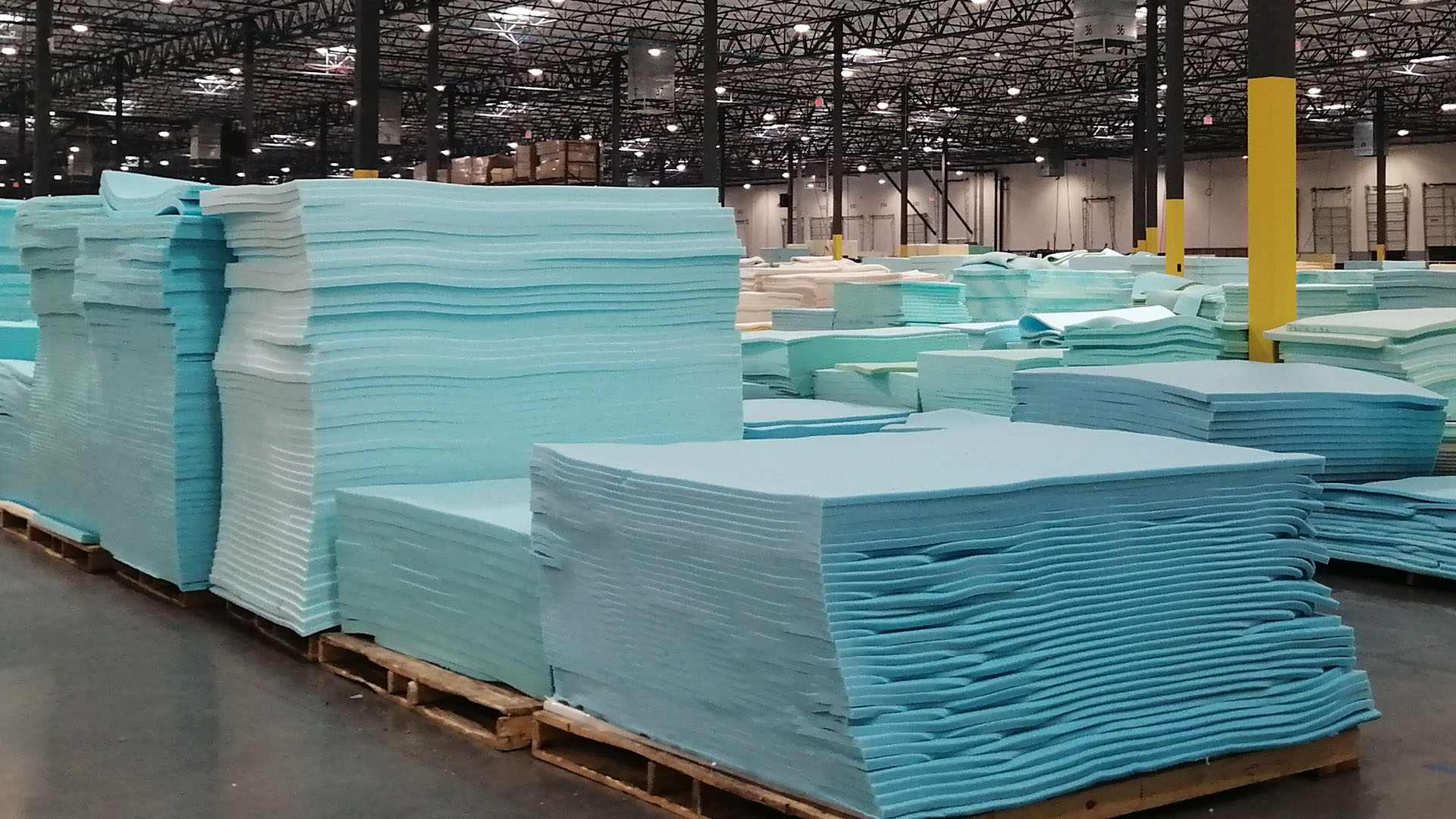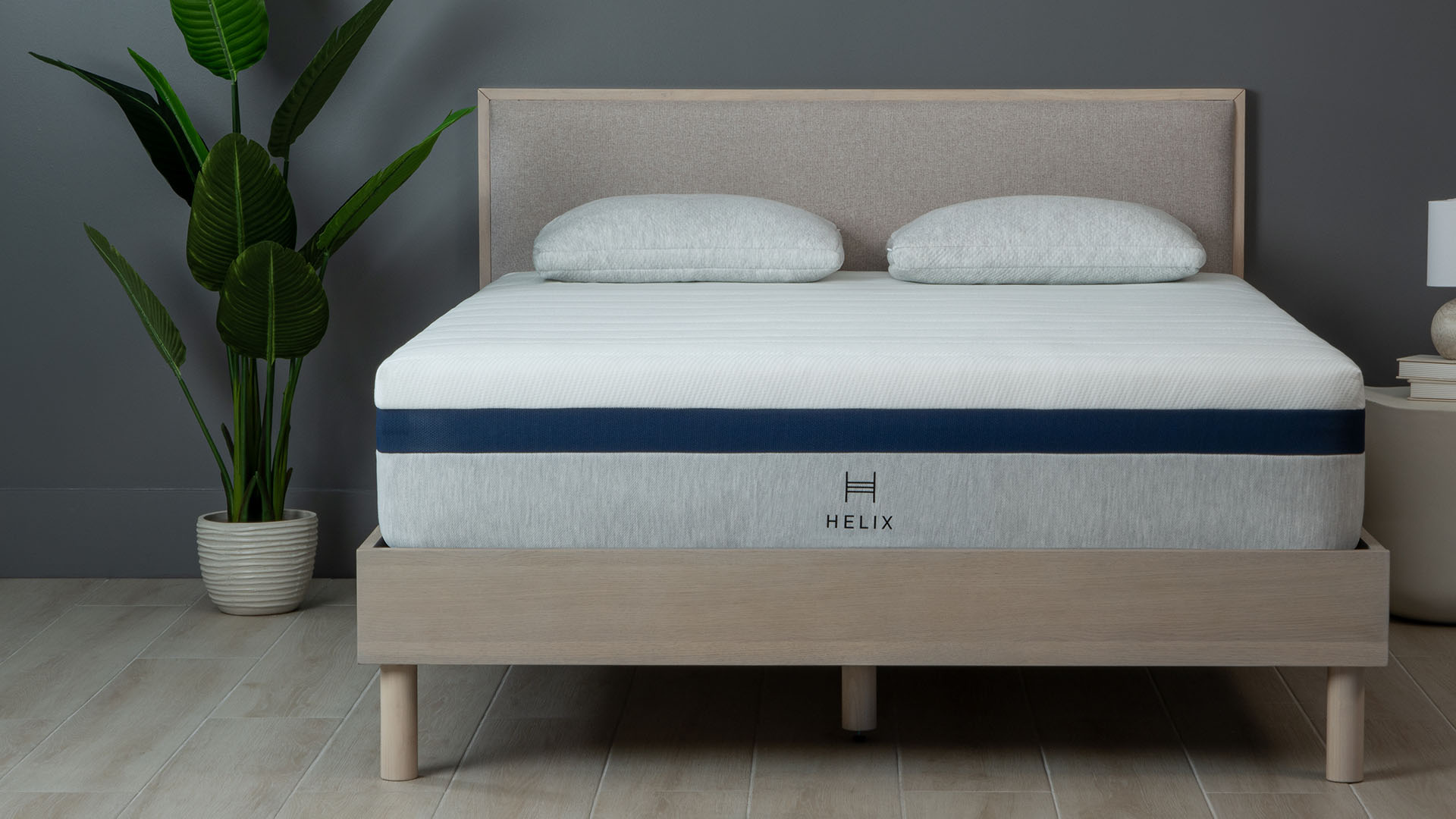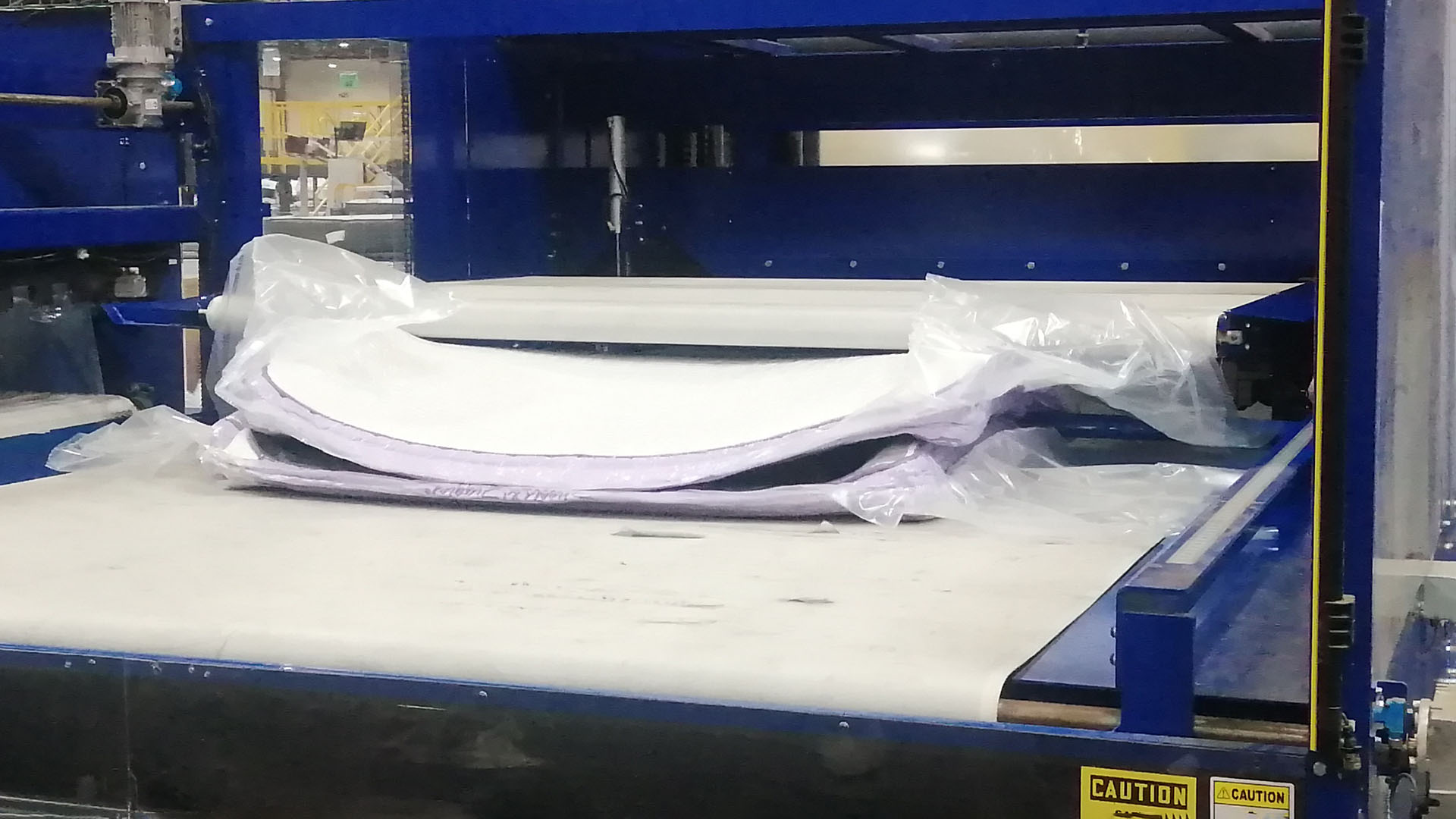What is the best type of memory foam?
Not all memory foam mattresses are created equal. Here are the things to look for in a comfortable, high quality, durable foam

Memory foam is a hugely popular mattress material, but it can be difficult to know what indicators to look for in a quality model. This guide is here to run though what exactly makes for the best memory foam mattresses – ones that will provide plenty of comfort and support for many years.
In its classic form, memory foam molds gently around the sleeper's body to provide custom support, cushioning the joints and absorbing movements from elsewhere in the bed. Many of today's best mattresses use foam, either as part of an all-foam design, or layered up with springs as part of a hybrid mattress.
All-foam mattresses can be extremely budget-friendly – many of our best cheap mattress picks are all-foam models. However, alongside those that punch above their price-tag are mattresses that are a false economy, so it's worth going in with a bit of knowledge of what to expect and what to look for.
Read on for a closer look at what makes a good memory foam, with insights from a mattress manufacturer from 3Z Brands – the parent company behind Helix, Brooklyn Bedding and more.
What foam density is best?
The main indicator of a high-quality mattress foam is how dense it is, measured in pounds. Generally speaking, the denser the foam, the better the quality, the longer it will last, and the more you'll have to pay for it. Unfortunately, not many brands actually publish this information, but if you can find it, it's useful to know what it means.
I'll get into specifics below, but here's the cheatsheet version:
- 3-4lb foam – Very high-quality, premium
- 2.5lb foam – Ideal for most people
- 1.8lb foam – Acceptable
- 1.5lb foam – Minimum
Not all foams in your mattress need to be dense. You want to focus specifically on the comfort layer – that is, the upper tiers of the mattress, which are closest to your body and will have an impact on what the bed feels like to sleep on.
Get daily insight, inspiration and deals in your inbox
Sign up for breaking news, reviews, opinion, top tech deals, and more.

Many mattresses will have multiple different foam layers – for example, foam can be used to provide a barrier between spring layers, or as a base. These layers are there for structural reasons rather than have a big impact on comfort, and so there's no need for them to be super-dense or expensive.
This guidance comes from Tim Dilworth, COO at 3Z Brands, a retail and manufacturing executive with 6 years' experience in the industry. I caught up with Dilworth during a tour of the company's mattress factory, just as they were getting set up to start pouring their own foams.
Foam density: Mid-range mattresses
Dilworth says that if you're buying a mid-range mattress (so between $800 and $1,200 for a queen size), you should look for a comfort layer of 2.5lb foam.
"For us, 2.5lb is a real nice, dense foam to work with. It's going to have really great durability and provide a great feel in combination with the other layers of the bed," says Dilworth. "If you're going to sort of be in that $1,000ish mattress [category], we think it's important that a significant layer of that is 2.5lb foam. It's the right mix of economy and quality for that sort of fit of mattress."

Foam density: Premium mattresses
For a luxury mattress, you might look for a foam comfort layer that's 3lb or denser. The premium Saatva Loom & Leaf uses 5lb foam (that's pretty unusual).
Dilworth advises exercising caution when considering these much more dense foams, because at a certain point you'll start to see a big price increase for only a marginal difference in sleep feel. "You're ultimately going to end up paying more, [because] there's literally more raw material in those layers. And at some point, there's a diminishing return against that from a consumer standpoint."
Foam density: Budget mattresses
If you're looking at the more budget end of the mattress market, you might not find a model with 2.5lb foam within your price range. Tim says a density of 1.8lb will be acceptable for most people, or 1.5lb at an absolute minimum.
"If you see foam less than 1.5lb I would start to get hesitant. We don't use anything under 1.5lb," he explains. "You know, if that's what you can afford, and that's your budget, that's okay. But the durability when you get below 1.5lb, in our mind, makes us nervous."
If you're buying a bed-in-a-box (that is, one that is vacuum-packed and rolled for shipping), and it's going to be sitting around in that state in a warehouse for some time before being shipped, you might find that these low-density foams won't fully regain their shape when you do finally get it home.

Is bouncy foam lower quality?
Foam can have different feels. A classic memory foam – like you'd find in a Tempur-Pedic mattress, for instance – is slow moving, so when pressure is removed it takes a second or so to return to shape (like the one in the video below). Other foams are much bouncier and more responsive. Dilworth says that neither is better than the other, it's just down to personal preference.
"There's nothing inferior about fast-response foam, it just feels a little bit different," he explains. "We've found that some sleepers like that feeling of memory foam where the bed is really conforming to you, and you're feeling really supported. And some people feel sort of trapped by that, and want their bed to be more active and responsive. Neither are good or bad. In my mind, it's just a personal preference."
Within the Helix range, for example, the brand uses sink-in memory foam for all of the models aimed at those who like to lie on their side (for example, the Helix Midnight, which we consider to be the best mattress for side sleepers). A more of a cradling feel can be useful in this position as it can prevent pressure from building up in the sleeper's shoulder and hips.
However, in its back/stomach sleeper mattresses, this sink-in foam is swapped out for a bouncier feeling foam that's easier to change position on.
Soft vs firm
Another part of sleep feel is firmness. Some foams will feel much firmer than others, and again, that's not directly linked to how high quality the foam is. You can have a 3lb foam that feels really firm, and a 3lb foam that's super-plush.
Look for a firmness that suits your sleep position, personal preference and body weight. As a general rule, the firmer your mattress should be. Back/stomach sleepers should also opt for a medium-firm or firm mattress to ensure their spine is properly supported, while side sleepers can get away with something softer (medium to medium firm) to cushion their hips and shoulders in this position.

Tim is a Retail and Manufacturing Executive based in Phoenix, AZ. As Chief Operating Officer at 3Z Brands, he leads the Product Development and Marketing of sleep products for leading bed brands including Helix and Brooklyn Bedding.

Ruth is TechRadar's Homes Editor specializing in air (vacuum cleaners, fans, air purifiers), and hair (hair dryers, straighteners and stylers). She has been in consumer journalism since 2020, reviewing and writing about everything from outdoor kit to mattresses and wellness gadgets, with stints on Tom's Guide and T3.